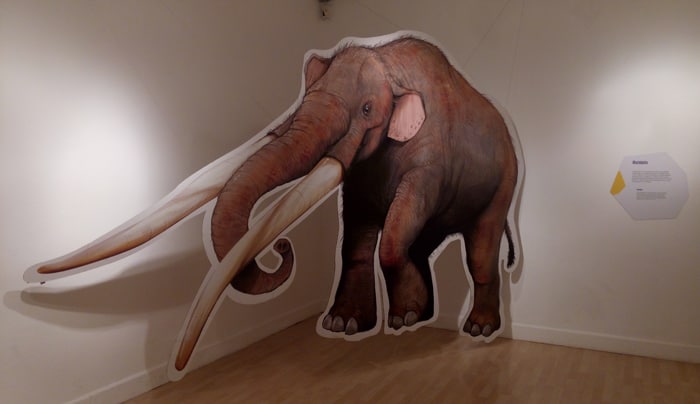Are you intrigued by old, enigmatic objects? Sometimes wonder about those unusual different-colored layers in road cuts? Found some pottery fragments in your garden that don’t look like anything modern? You dig? Well, whether you dig or not, this column will provide answers to a lot of these kinds of questions, elucidate Costa Rica’s key role in the archaeology of the Americas, and highlight landmark discoveries in the country over the past 50 years. Your questions are welcome.
The First Costa Ricans
Given current archaeological evidence, the first people in Costa Rica were definitely present at least 10,000 to 11,000 years B.C. Two things are important here: 1) they left behind chipped stone artifacts – spear points, hide and wood scrapers, drills – that have been securely radiocarbon-dated (C-14) to those times in other parts of the Americas; and 2) they were already physiologically modern human beings (Homo sapiens), just like we are today.
There was no human evolution in the American continents prior to Homo sapiens; that biological evolution took place in Africa, Asia and Europe only. The consensus among modern scientific archaeologists is that the first small bands of hunters following the last ice-age big game (megafauna such as mastodons, mammoths and others) across the frozen Bering Strait from Asia found themselves in a hunter’s paradise, where big meaty animals did not know or fear humans and thus made easy prey.
Some other archaeologists believe that humans entered the Americas as early as 30,000 to 40,000 years ago. These early human hunters killed by trapping giant animals in swampy ground and killing them with spears.
About Spear Points: Clovis and Fishtail
A pervasive theme that I will be mentioning here and in most of my columns to come is the importance of Costa Rica as a dynamic, fluctuating frontier zone between two major spheres of pre-Columbian cultural influence: Mesoamerica (central Mexico through El Salvador) and northern South America, primarily Colombia. (For those who might be wondering, the Andean high civilizations such as the Inca and their predecessors had very little to do with Costa Rican indigenous cultures.)
Remarkably, this cultural frontier role is evident even in the first human artifacts found in Costa Rica, which, in 1975, I found in a recently plowed sugarcane field called Finca Guardiria, near the Caribbean-slope town of Turrialba.
With the first archaeology students I had hired at the National Museum, we were surface-collecting the chipped flintlike stone artifacts we observed, first staking out a two-by-two-meter grid for better spatial control of the uppermost terrace of the cane field. There were lots of interesting man-made flint chips and reworked tools, but imagine my surprise when the student archaeologists emptied their collected bags back in the National Museum: two Clovis (named after Clovis, New Mexico, where one of the first examples was found 80 years ago) and one fishtail fluted (a bifacial channel made on the base to aid firm hafting) spear points. Big news!
There had been no previous artifact evidence of a Paleo-Indian occupation in Costa Rica, except a lone Clovis point supposedly found in the early 20th century by Carl Harman, a Swedish archaeologist, in the northwestern Guanacaste province, site unknown.
The students hadn’t realized what they had picked up, but those points and several other kinds of Paleo-Indian chipped stone tools revealed to me the first solid evidence of a workshop and probably habitation site on a terrace overlooking the Reventazón River and perhaps a now-vanished lake. The early hunters would lie in wait for the giant mammals to arrive and drink and then ambush them. The source of the flint was found in large boulders washed out of an ancient limestone ridge and into a small stream right below the terrace.
I published this important discovery, first in Spanish in Vínculos, a professional journal I founded in the National Museum, and then in American Antiquity, the foremost U.S. archaeological journal. The Tico Times gave front-page coverage to the discovery (TT, Sept. 17, 1976), a tradition the paper has continued to the present.
But here is what I find fascinating: Clovis-type Paleo-Indian spear points are found from Central America north to Alaska, while contemporary fishtail spear points, so named for their shape, are known from Costa Rica all the way to Patagonia, the tip of South America.
In Costa Rica, we now have recovered seven Clovis points and three fishtail points made by these first human inhabitants. But in Panama, seven fishtail points and only two Clovis points are documented. More than 10,000 years ago, Costa Rica’s role as a major ancient cultural frontier was first recognized, and it continued from that time until the Spanish arrival in the early 1500s.
Interested? I certainly was, and in the following years this key cultural frontier aspect of ancient Costa Rica was substantiated time and time again.
Archaeologist Michael J. Snarskis, Ph.D., has lived and worked in Costa Rica for more than 30 years. He founded and directed the first scientific archaeology program in the National Museum and trained the first generation of Costa Rican students there and as a professor at the University of Costa Rica. A graduate of Yale and Columbia universities, he has published 67 books and articles, including catalogues for acclaimed museum exhibitions in the United States and Europe.






